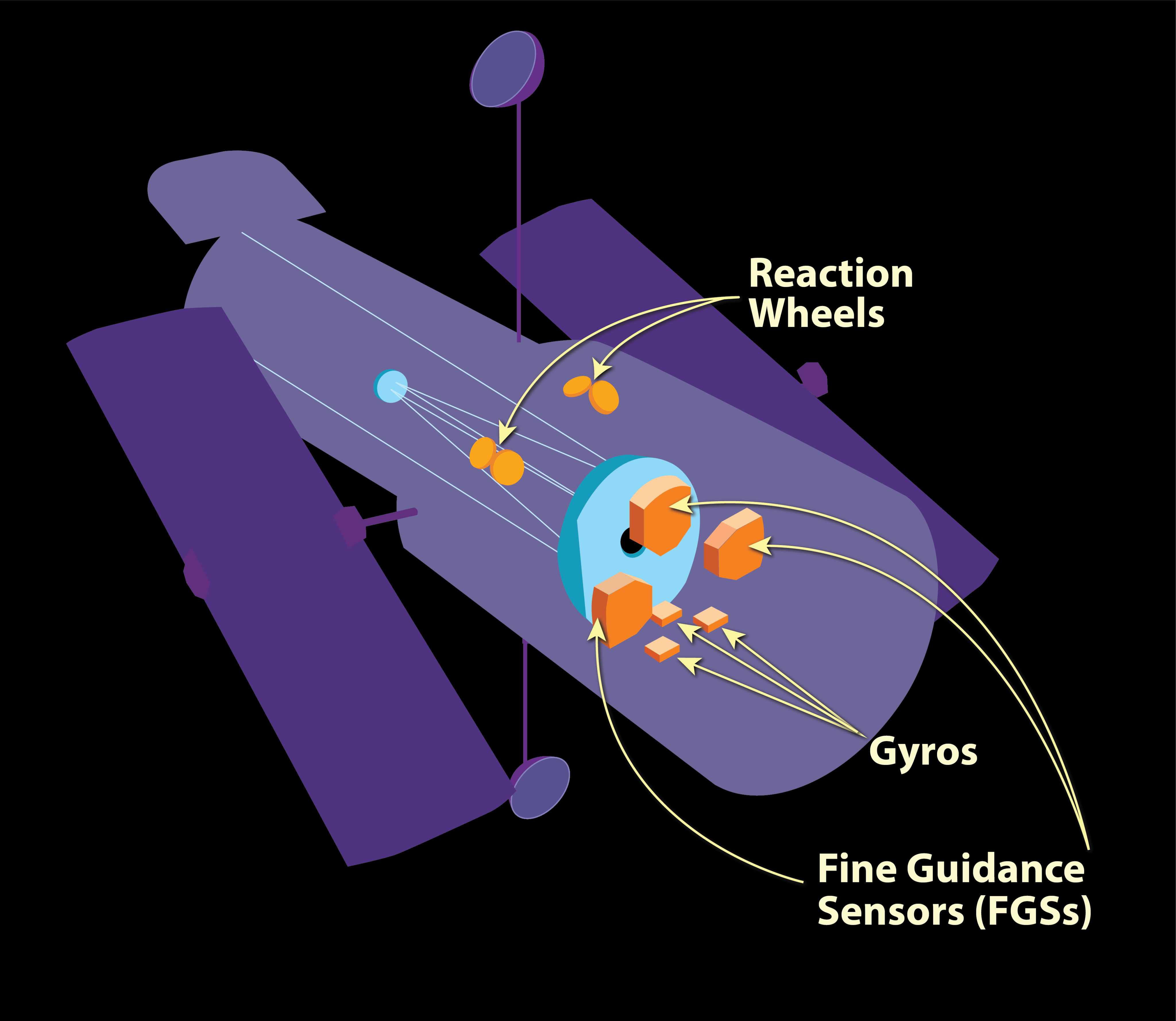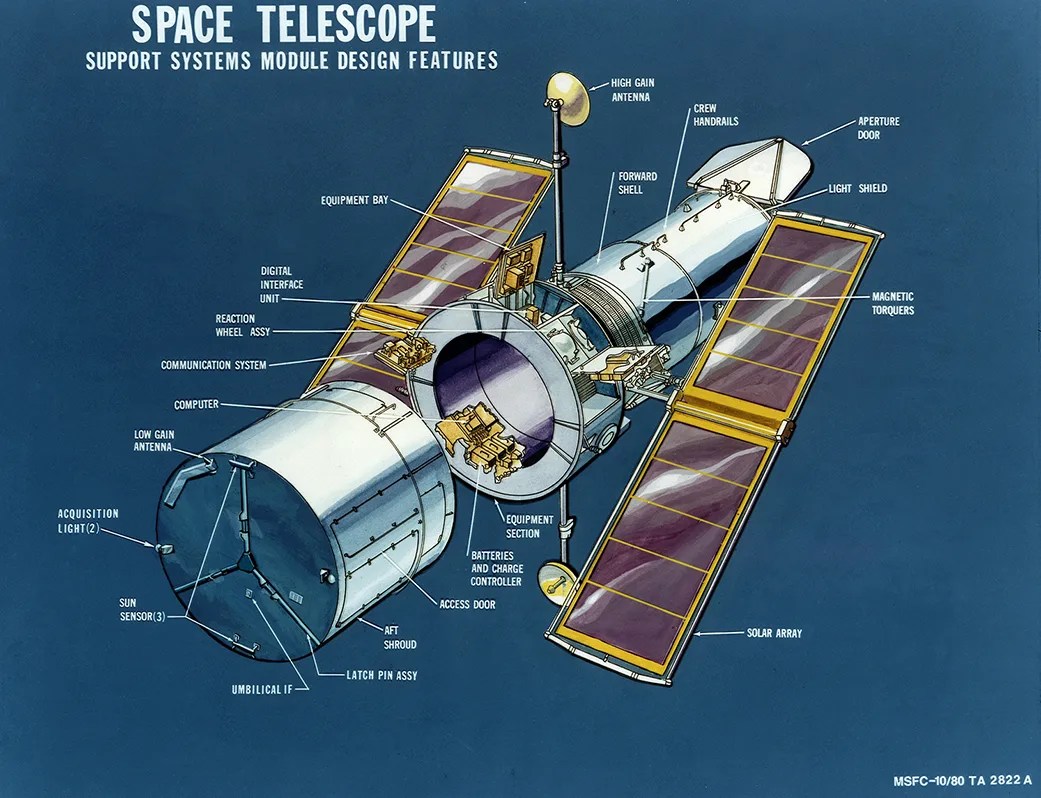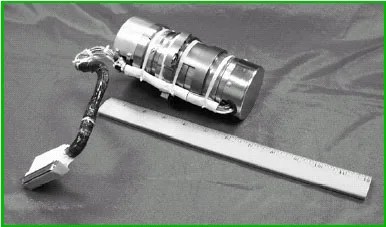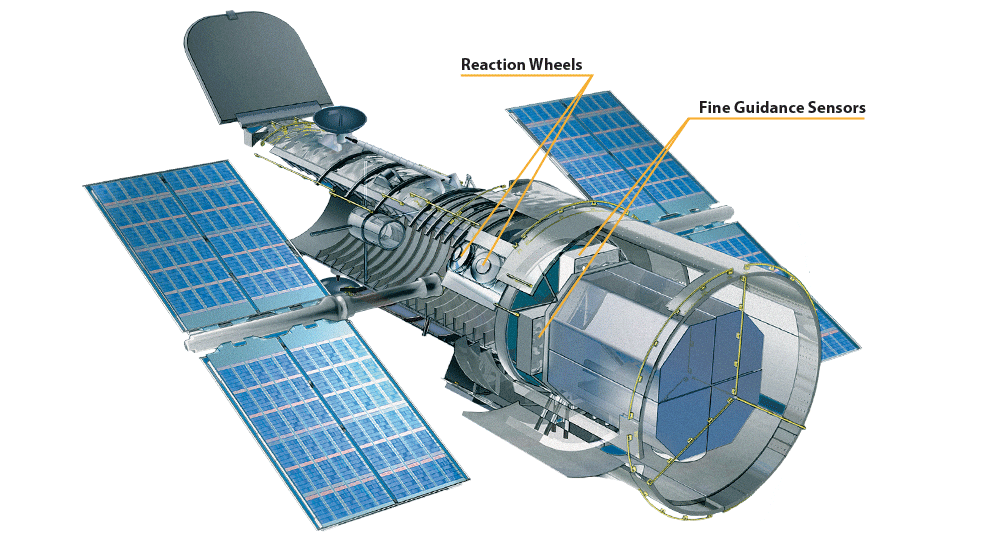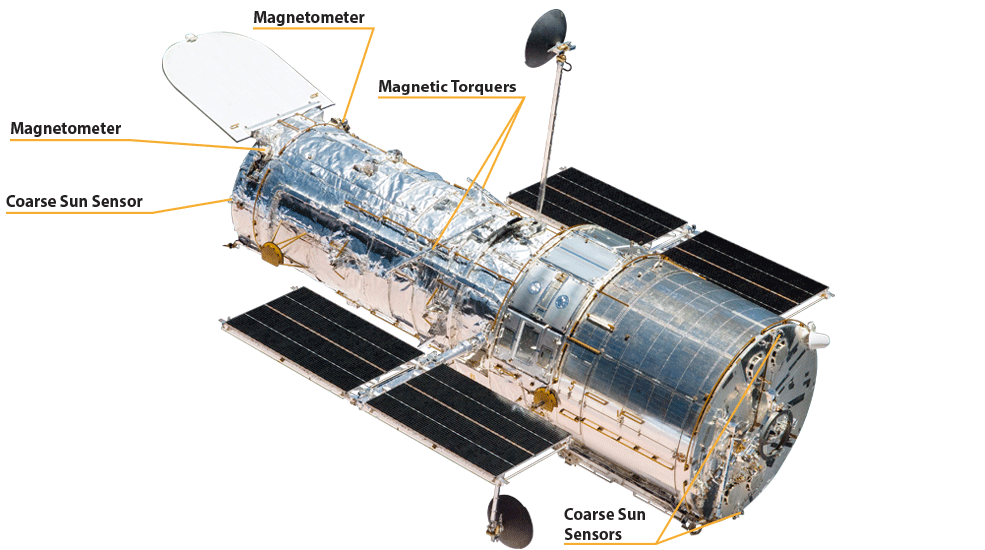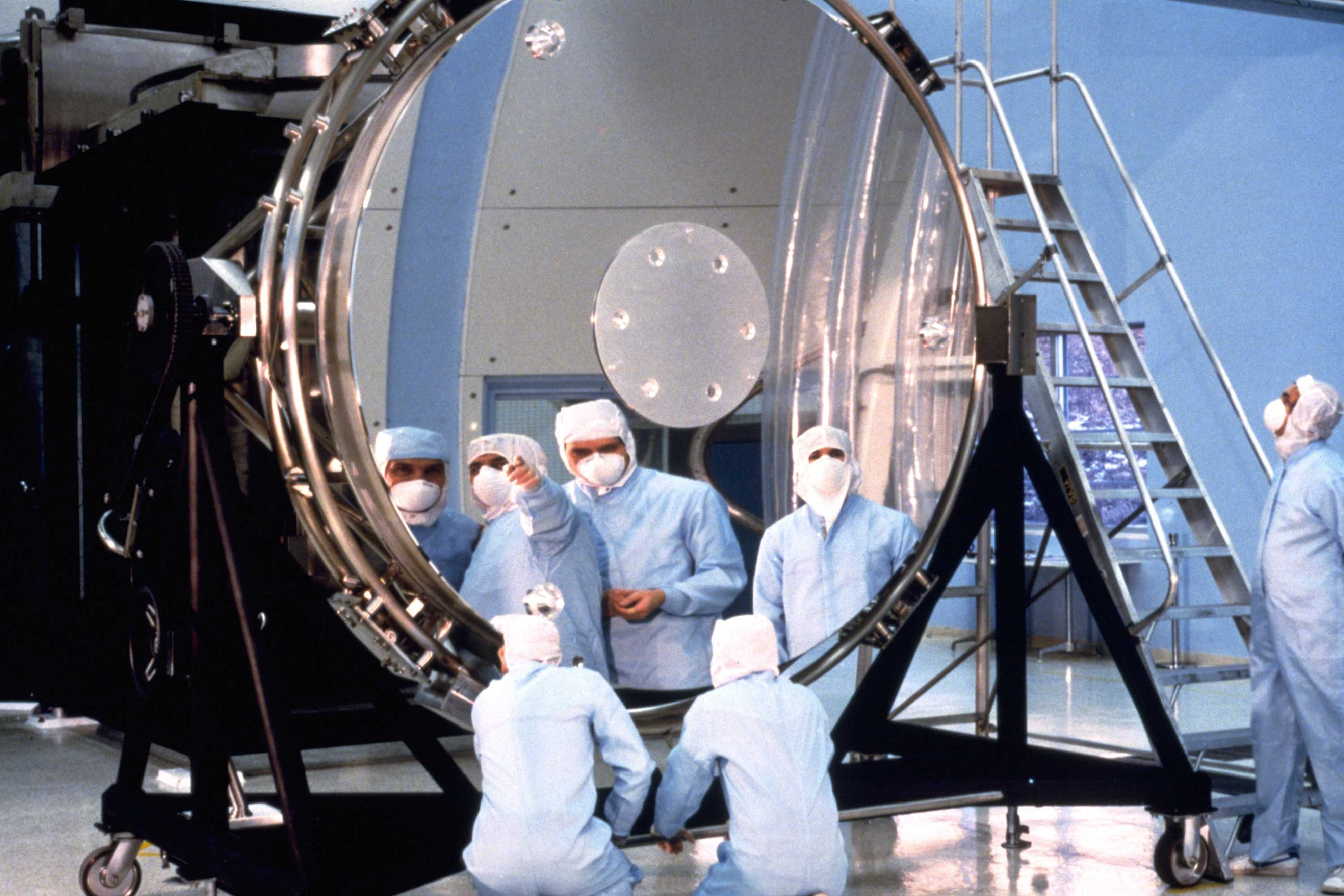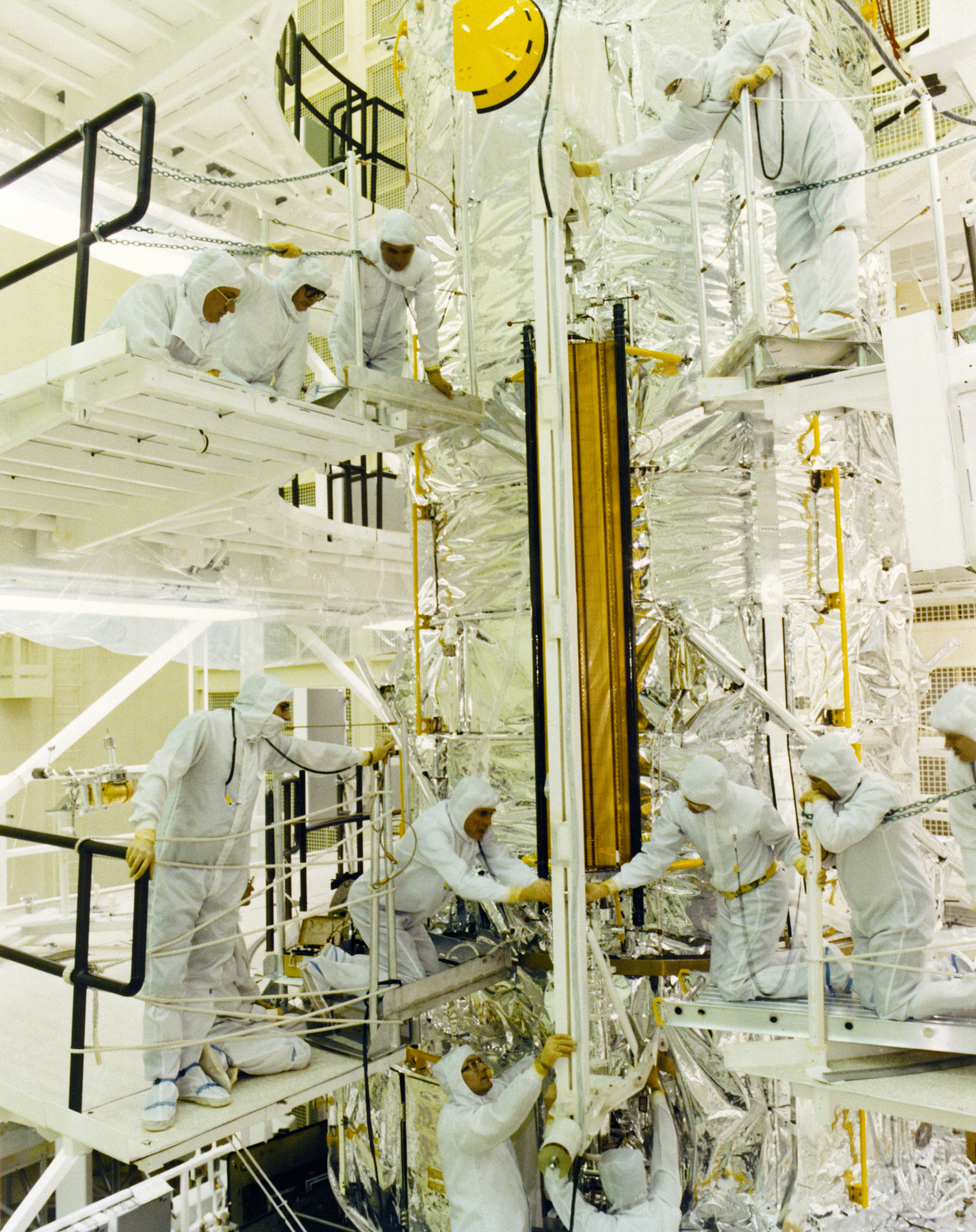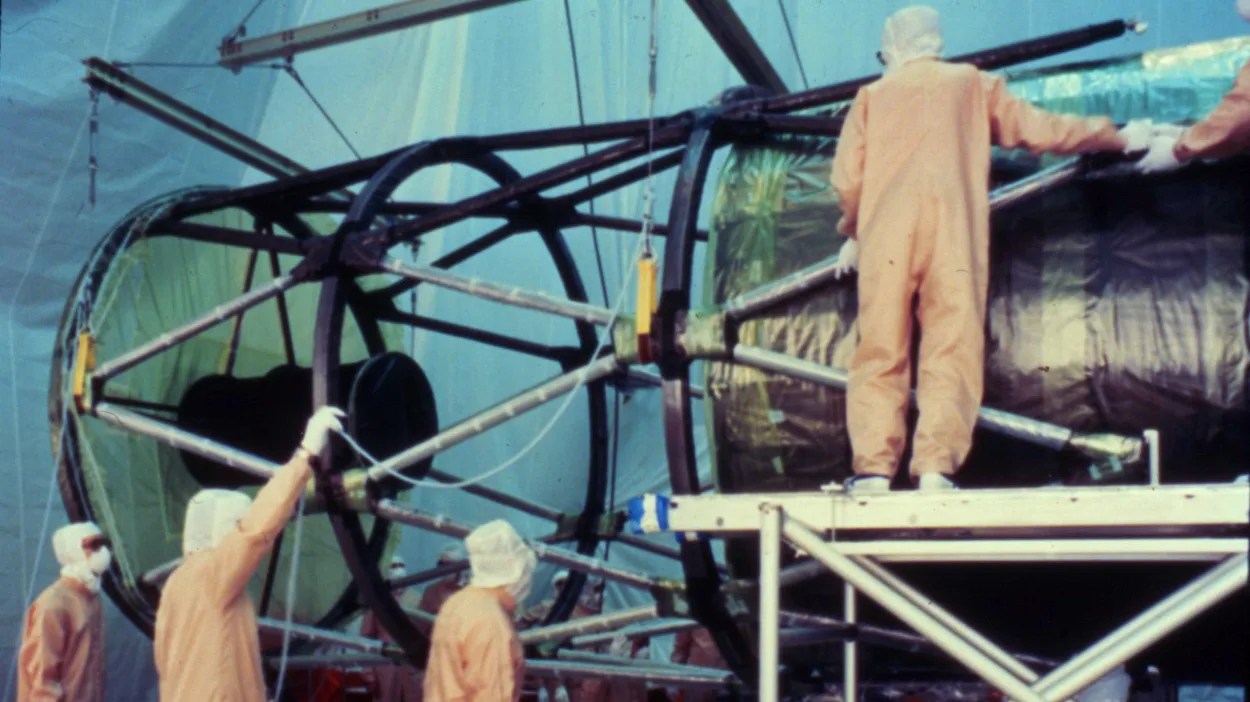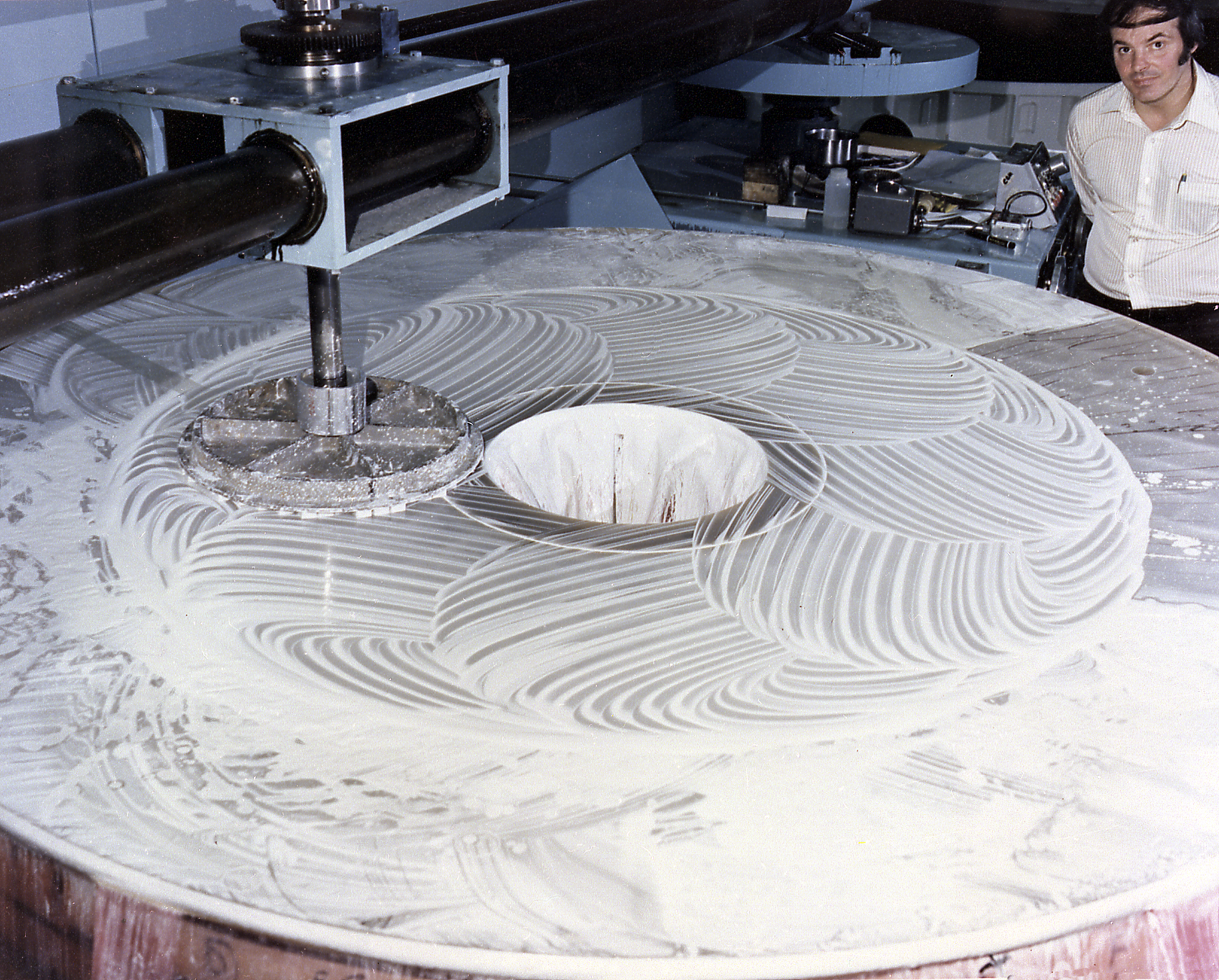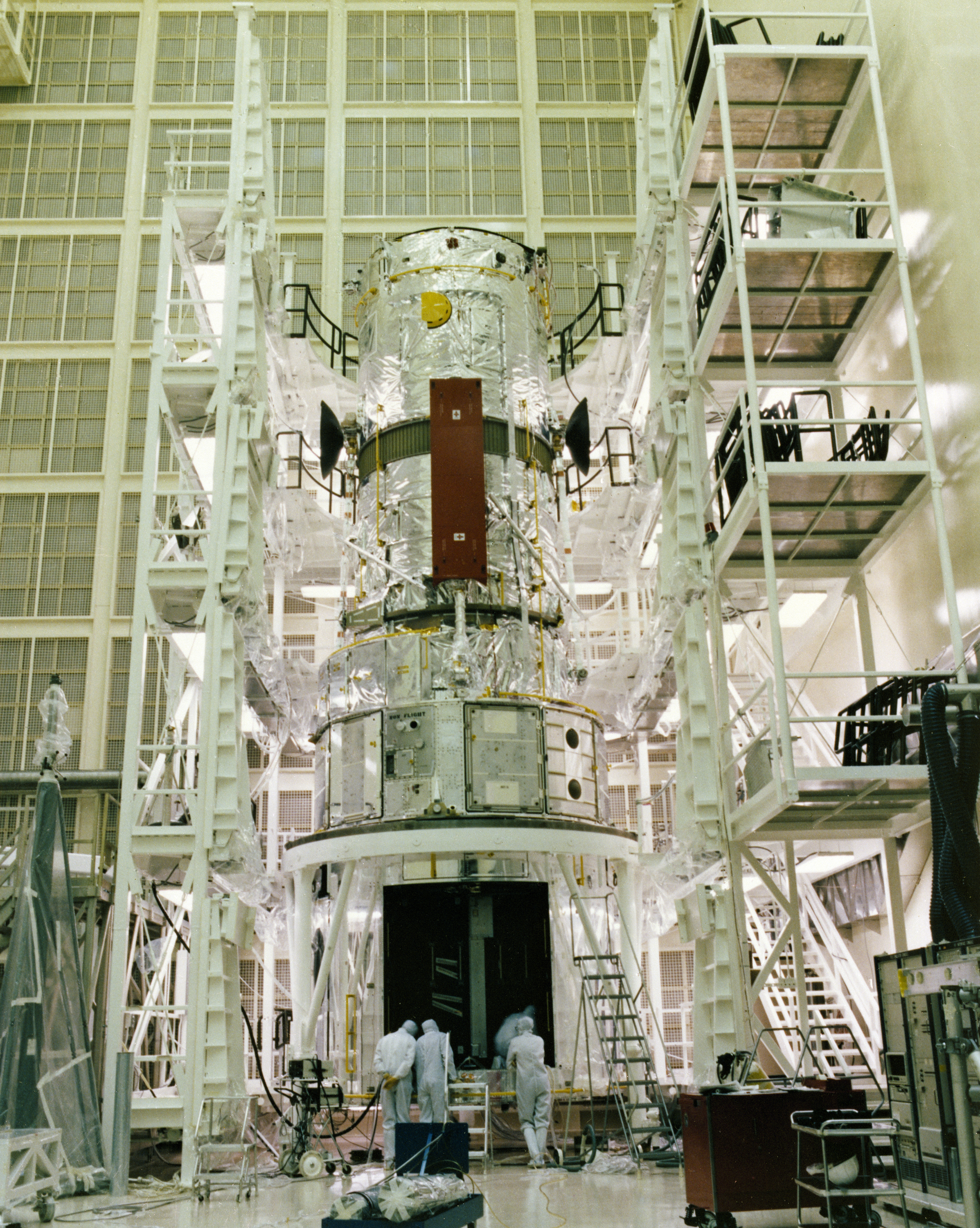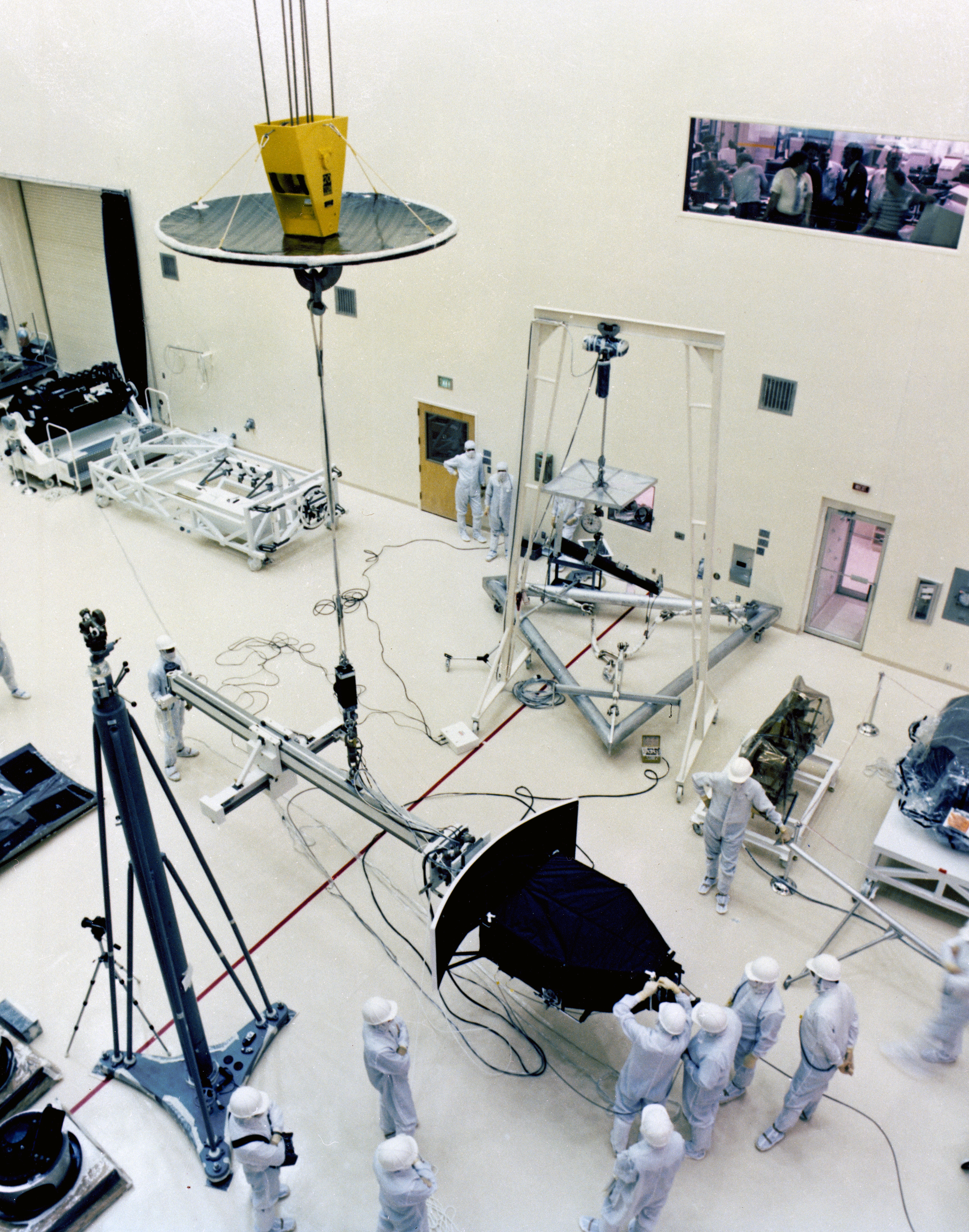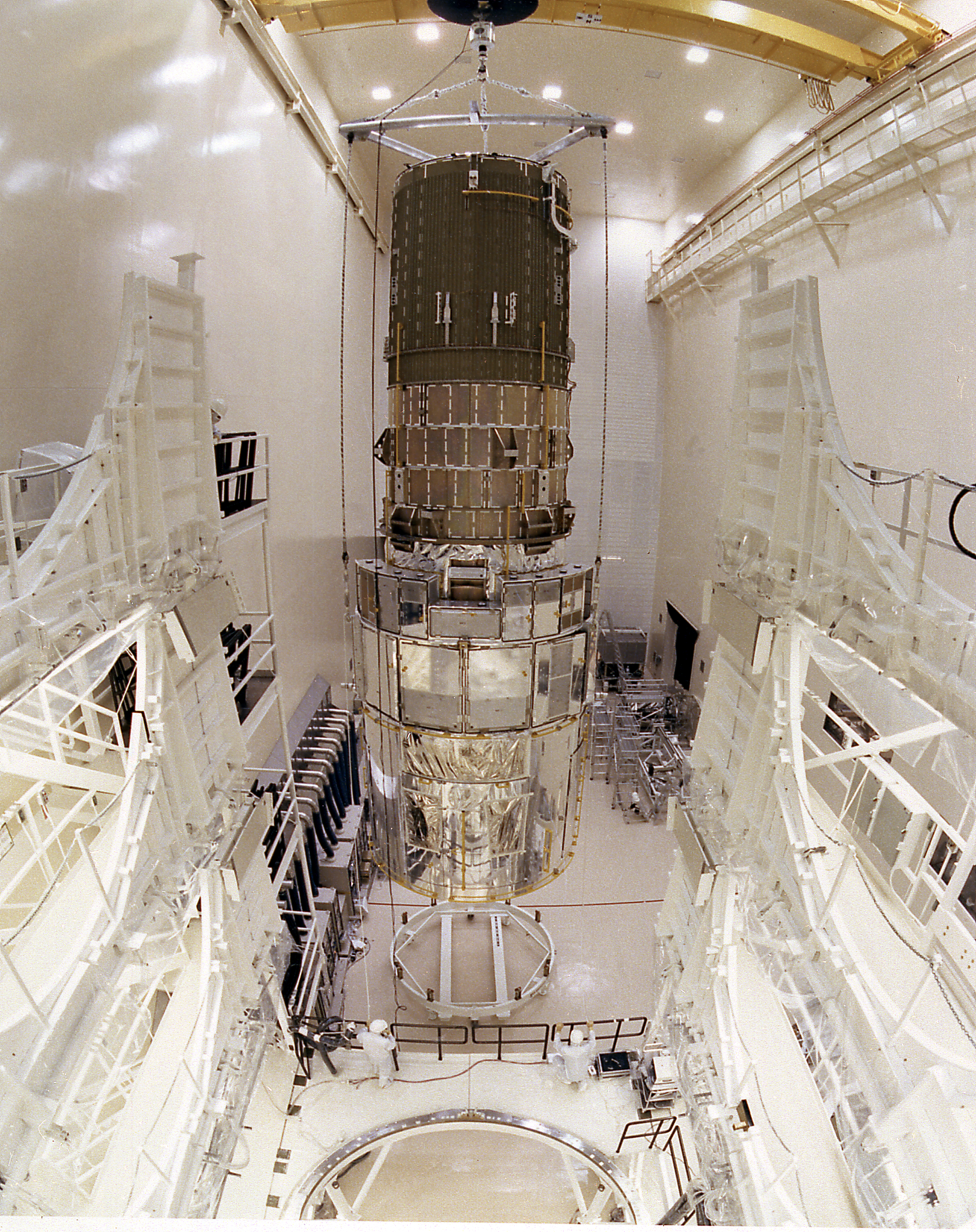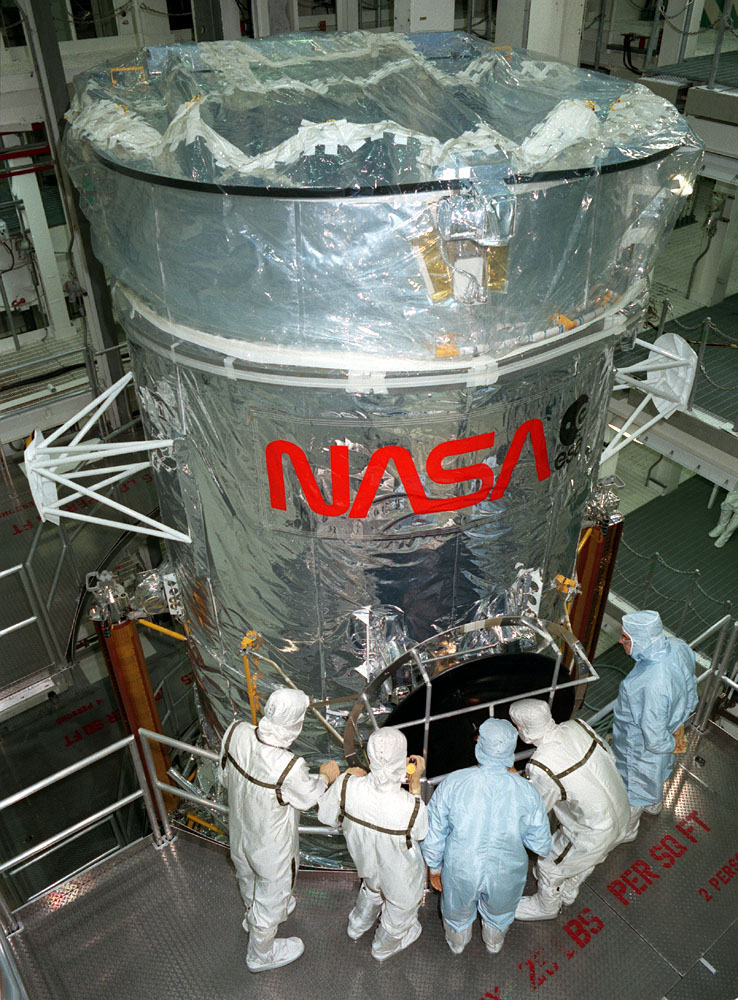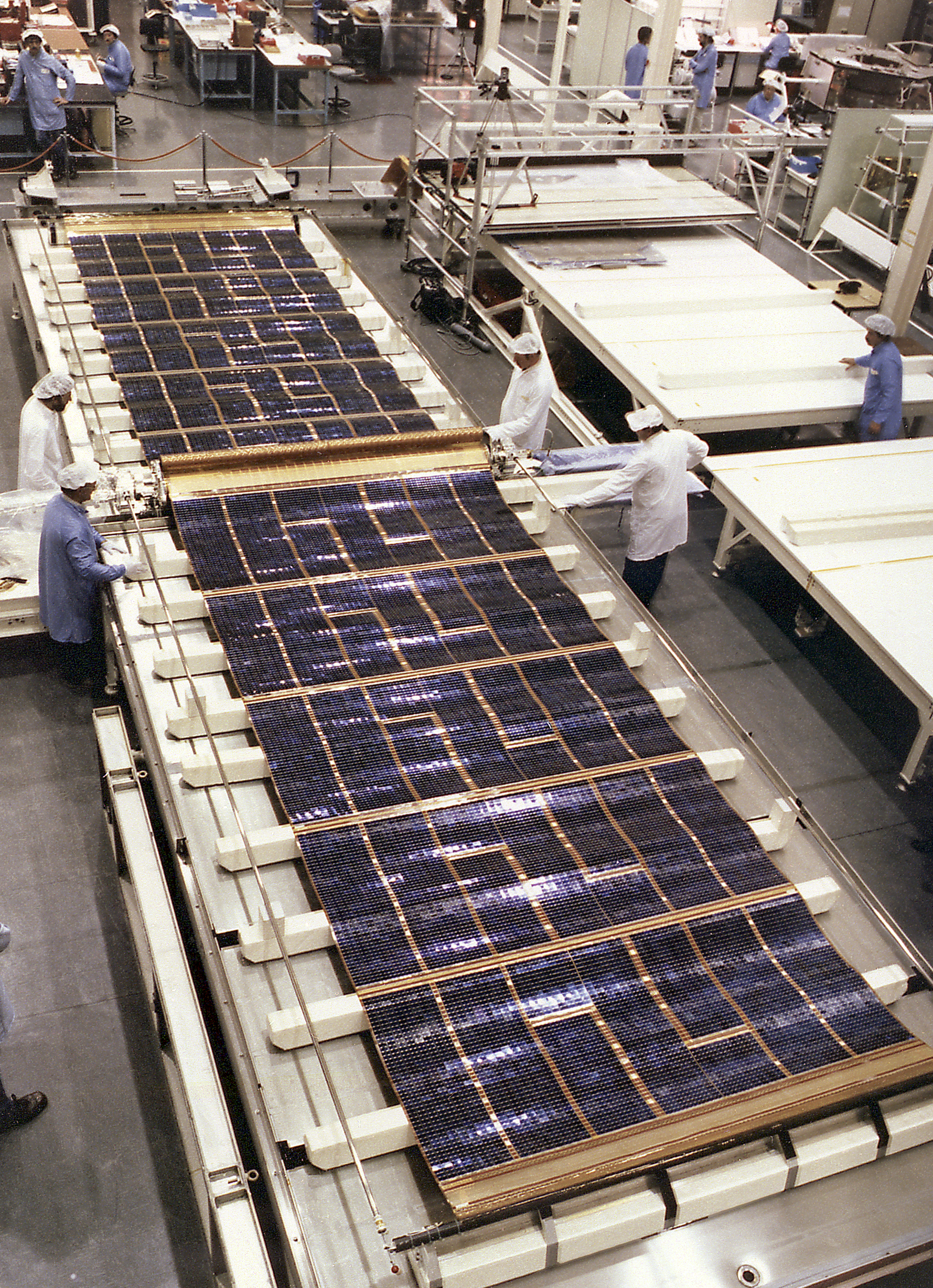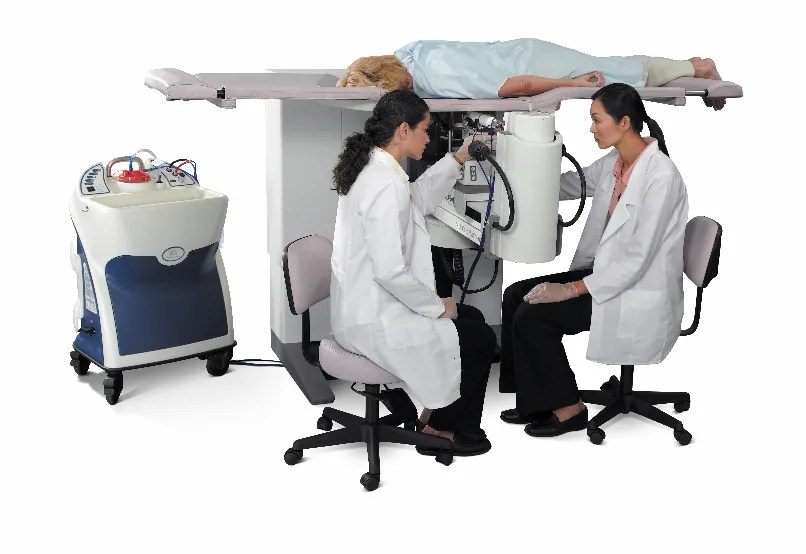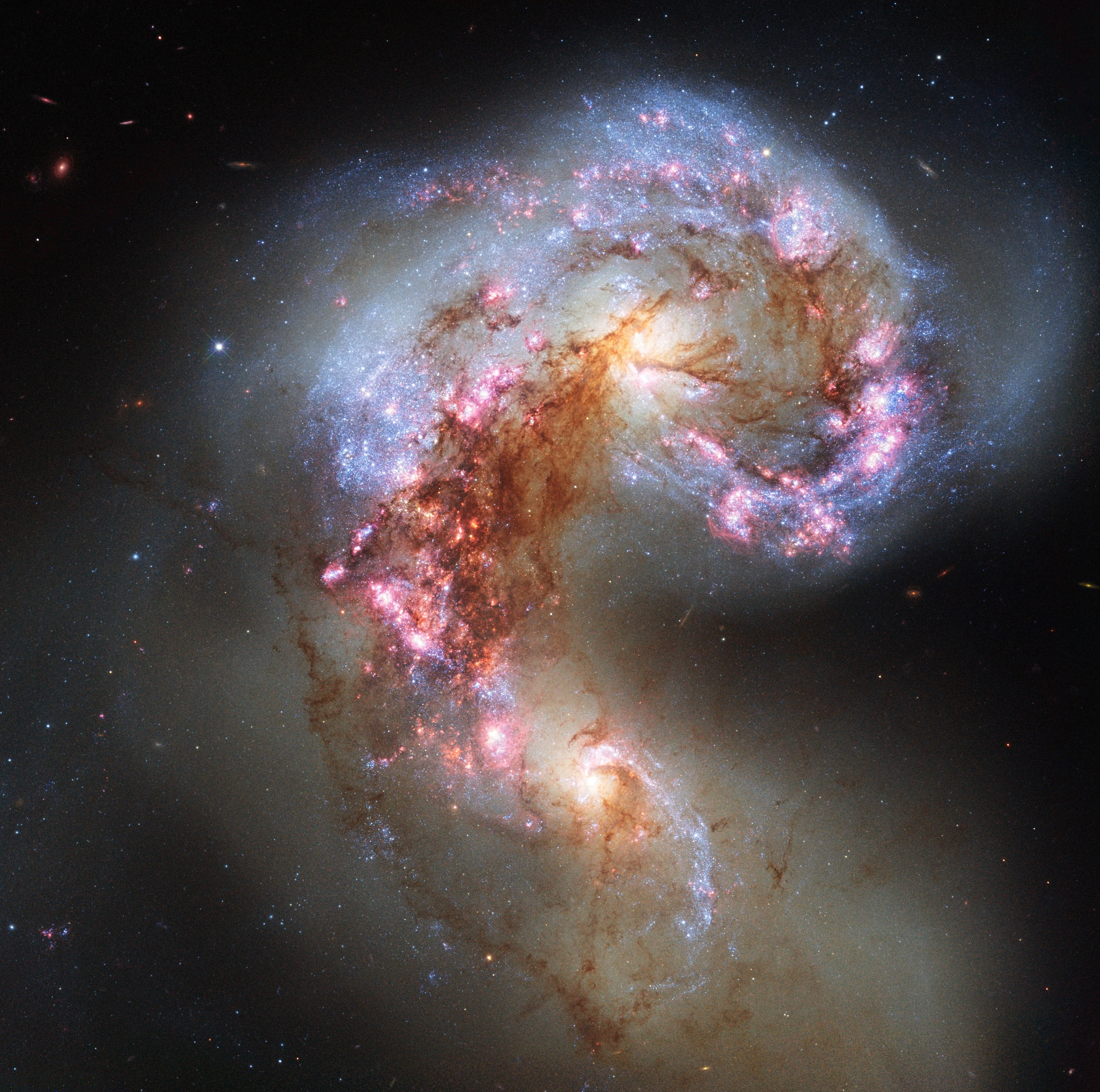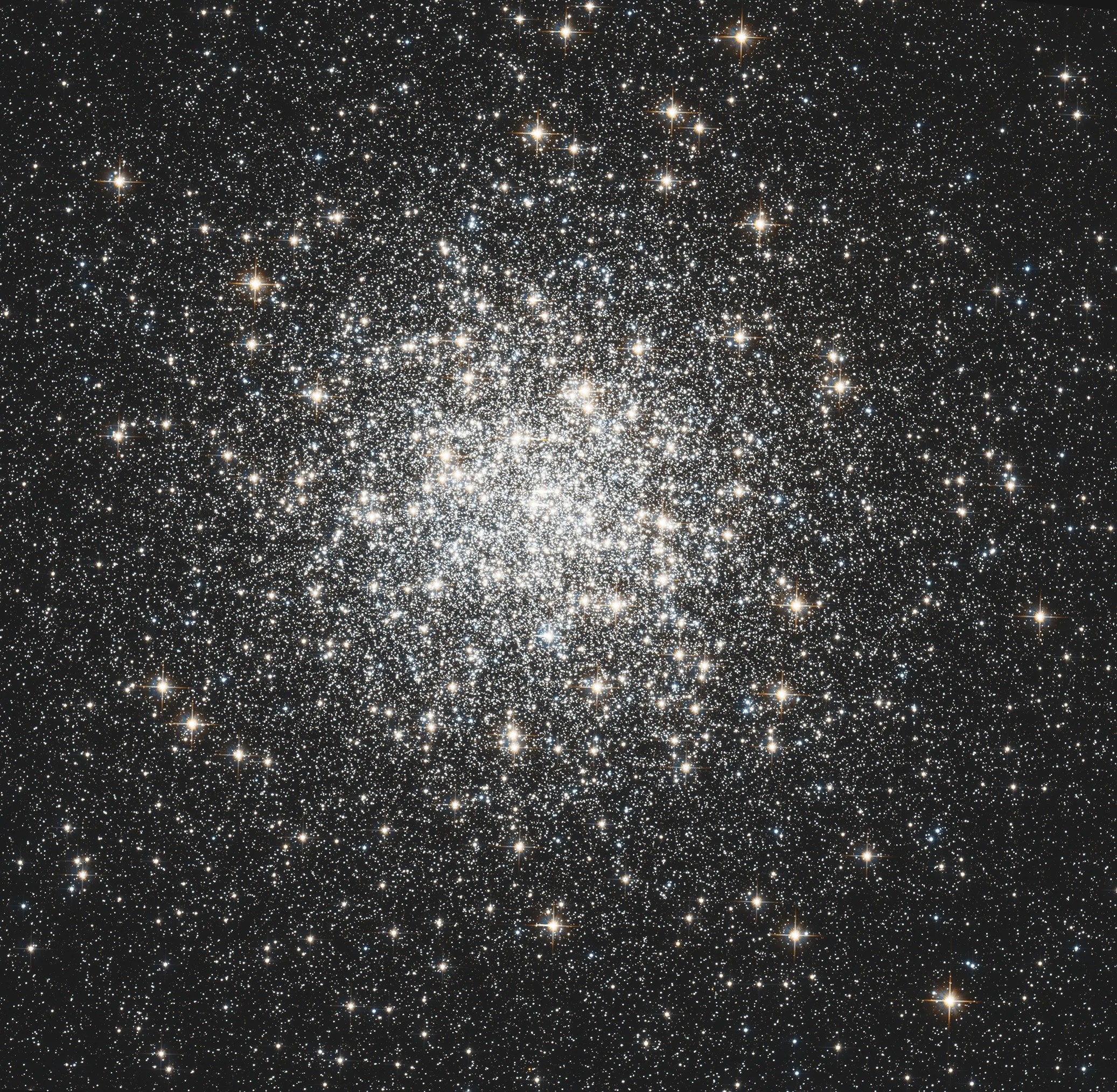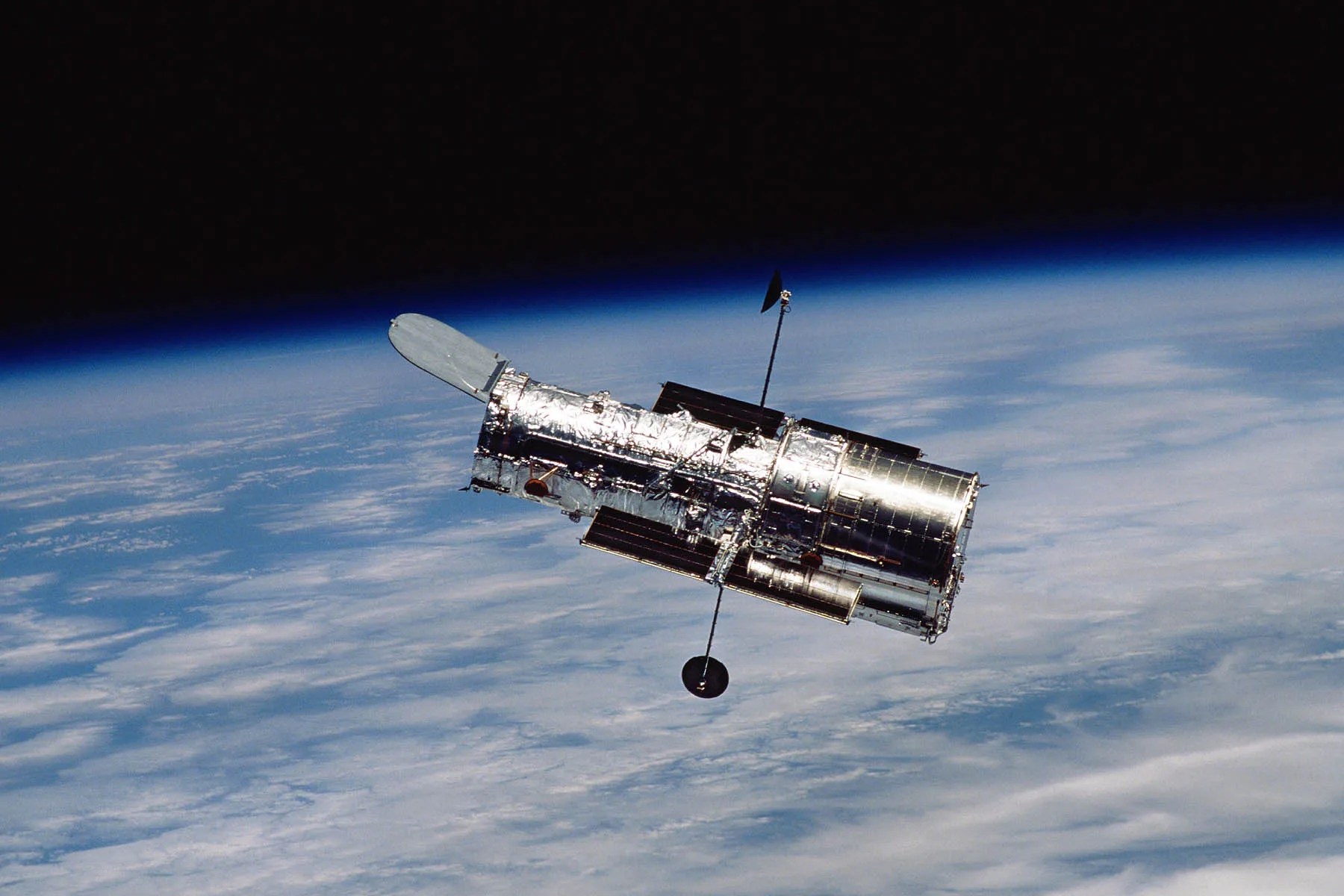Pointing Control
Hubble’s Pointing Control System keeps the telescope safe and on target while traveling around Earth at 17,500 miles (27,300 kilometers) per hour.
Quick Facts
Hubble Design
Pointing Control
Cutaway diagram of the Hubble Space Telescope
Overview
While operating in Earth orbit, the Hubble Space Telescope depends on a robust Pointing Control System to determine the direction in which it is pointing (called its attitude), to turn toward a celestial target, and to remain fixed on that target during observations.
The Pointing Control System uses two sets of hardware: sensors and actuators. Sensors gather information about the spacecraft’s attitude from the Sun, the stars, and Earth’s magnetic field. Actuators physically rotate the telescope to point in a particular direction.
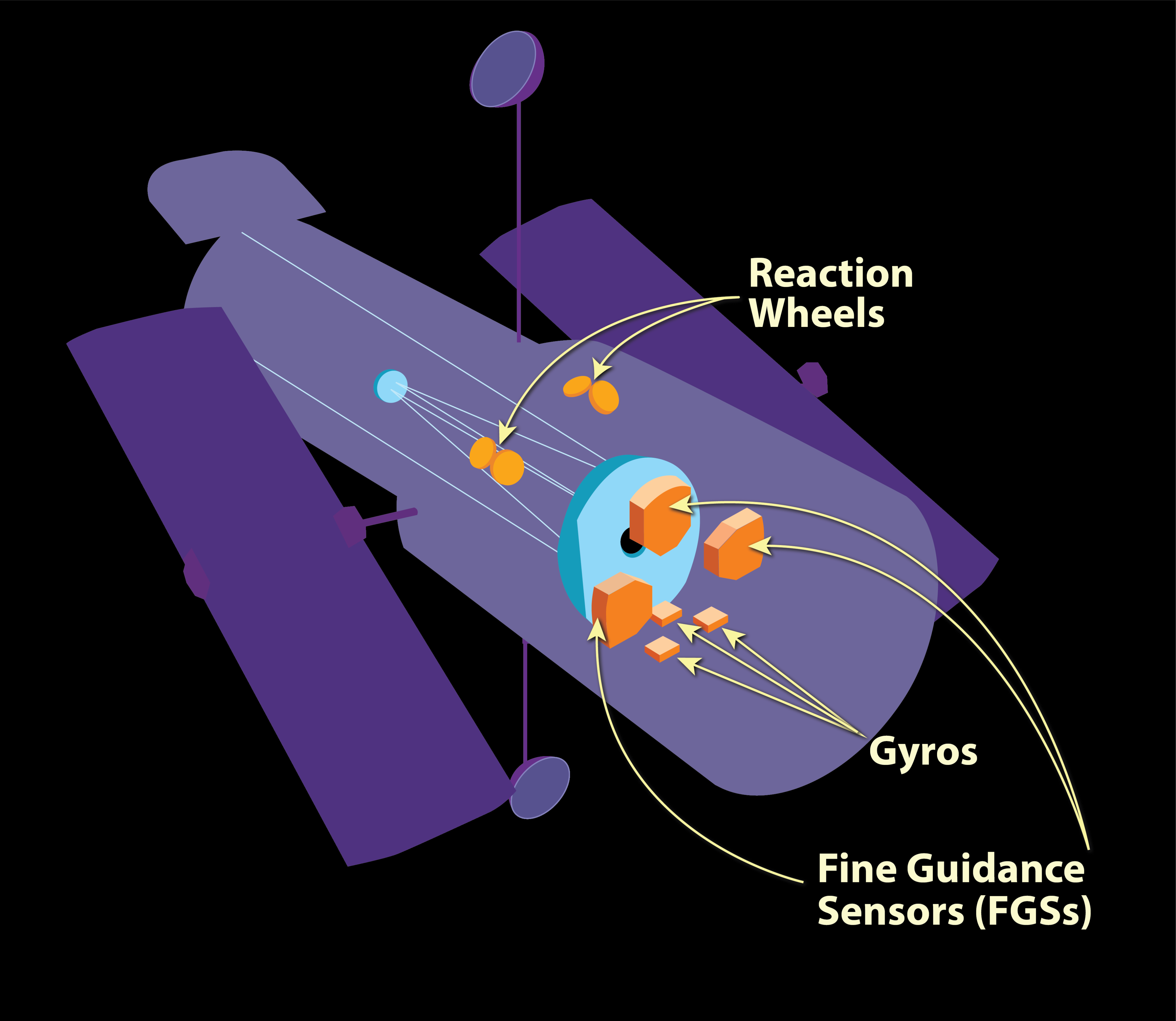
Sensors
Five types of sensors make up the Pointing Control System: the Coarse Sun Sensors, the Magnetic Sensing System, the gyroscopes, the Fixed Head Star Trackers, and the Fine Guidance Sensors. Each type of sensor serves a unique purpose, ranging from rough attitude determination to protecting the telescope. All of the sensors work in tandem to adjust Hubble’s attitude on command.
The Coarse Sun Sensors determine the orientation of Hubble in relation to the Sun. The sensors use silicon diode detectors to determine whether the Sun is present in their field of view and, if so, the angle of the Sun relative to the sensor. This information is used to help point the telescope and to protect the observatory’s sensitive instruments and optics. Because Hubble was designed to pick up very faint light, the telescope must be pointed at least 50 degrees away from the Sun at all times. If sunlight enters the telescope, the bright light could damage the detectors and degrade the black paint lining the optical tube that prevents reflections from stray light. Additionally, the heat could cause expansion in the structure that holds the mirrors, interfering with the telescope’s focus.
The Magnetic Sensing System acts as Hubble’s compass, measuring the telescope’s orientation in relation to Earth’s magnetic field. The system consists of magnetometers and dedicated electronics, which, like a compass, assess the orientation of the telescope.
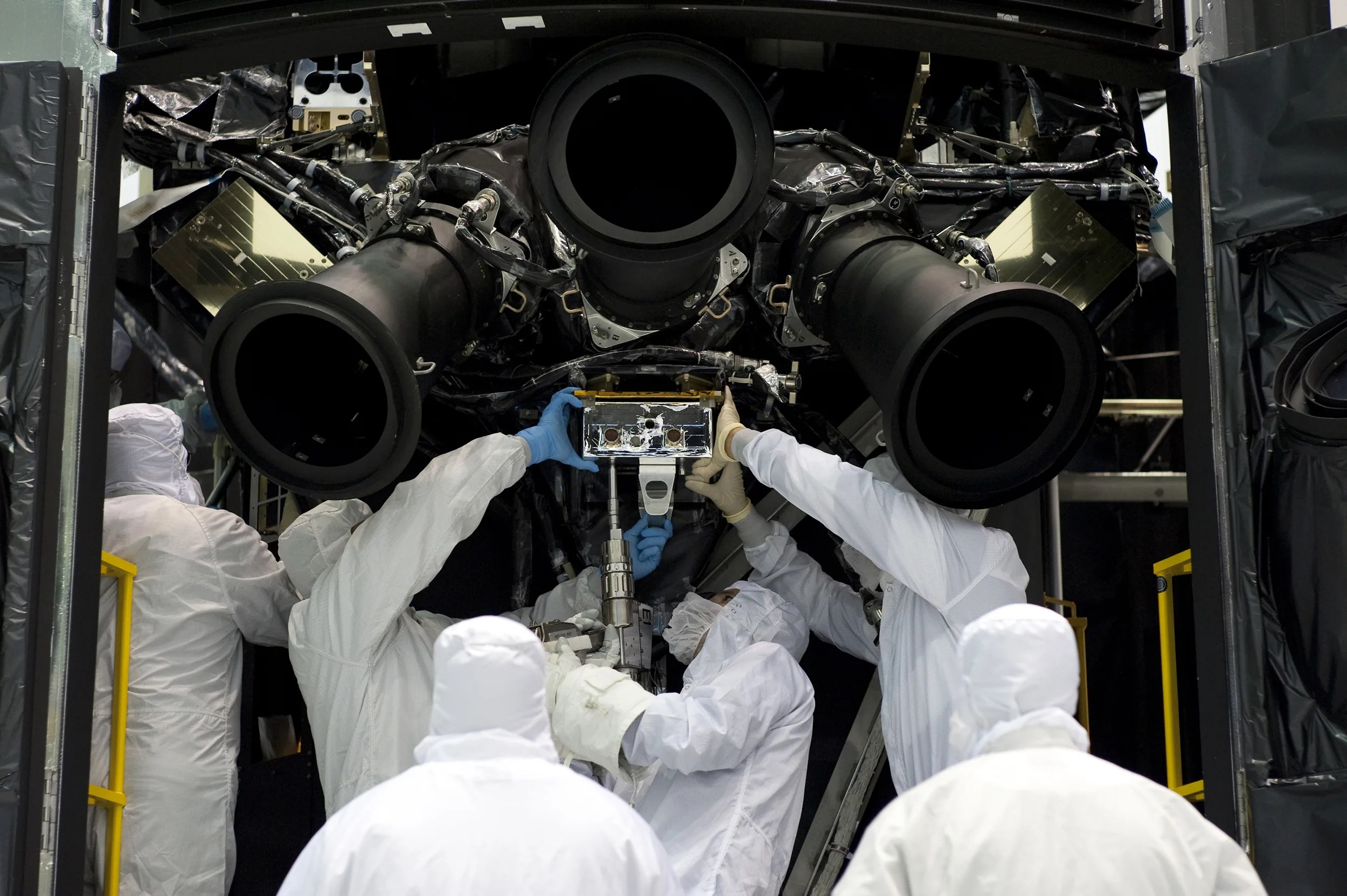
When Hubble rotates, its gyroscopes measure the direction the telescope is turning and the rate of that rotation. Hubble has some of the most accurate and stable gyroscopes ever built. The hair-thin wires that carry electricity in the gyroscopes can degrade over time, however, causing incorrect rate measurements, called biases, and eventual failure. Software corrections have been developed to account for the biases, and improvements in the manufacturing of the gyroscopes has increased their lifespan. Astronauts replaced all six of Hubble’s gyroscopes on the final Hubble servicing mission in 2009 to extend the productive life of the telescope as long as possible.
Typically, three gyroscopes are used at a time to measure Hubble’s rotation rate in all three dimensions in order to maximize the efficiency of the Pointing Control System and the amount of science that can be conducted. However, the Pointing Control System was improved to operate with two gyroscopes, or even just one, in tandem with other sensors. These operational modes are not as efficient as using three gyroscopes, but they still allow Hubble to continue producing ground-breaking science.
The Fixed Head Star Trackers determine Hubble’s attitude by measuring the locations and brightnesses of stars in their field of view. Stars form random and unique patterns throughout the sky, which the onboard computer can match to a star map using the position and brightness information provided by the Fixed Head Star Trackers. This increases the accuracy of the observatory’s attitude to within 60 arcseconds, and it allows the computer to correct attitude errors following vehicle maneuvers so that the Fine Guidance System can lock onto guide stars.
The Fine Guidance System is Hubble’s most accurate pointing sensor, and it is comprised of three Fine Guidance Sensors (FGSs). The FGSs use starlight captured by the telescope’s mirrors to find and maintain a lock on guide stars to ensure that the spacecraft’s attitude does not change. One FGS can also be used as a scientific instrument to determine a star’s position with high accuracy. The level of stability and precision that the FGSs provide gives Hubble the ability to remain pointed at a target with no more than 0.007 arcsecond of deviation over extended periods of time. This is the same as holding a laser beam focused on Franklin D. Roosevelt’s head on a dime roughly 200 miles away – which is about the distance from Washington, D.C., to the Empire State Building in New York City – for 24 hours.
Actuators
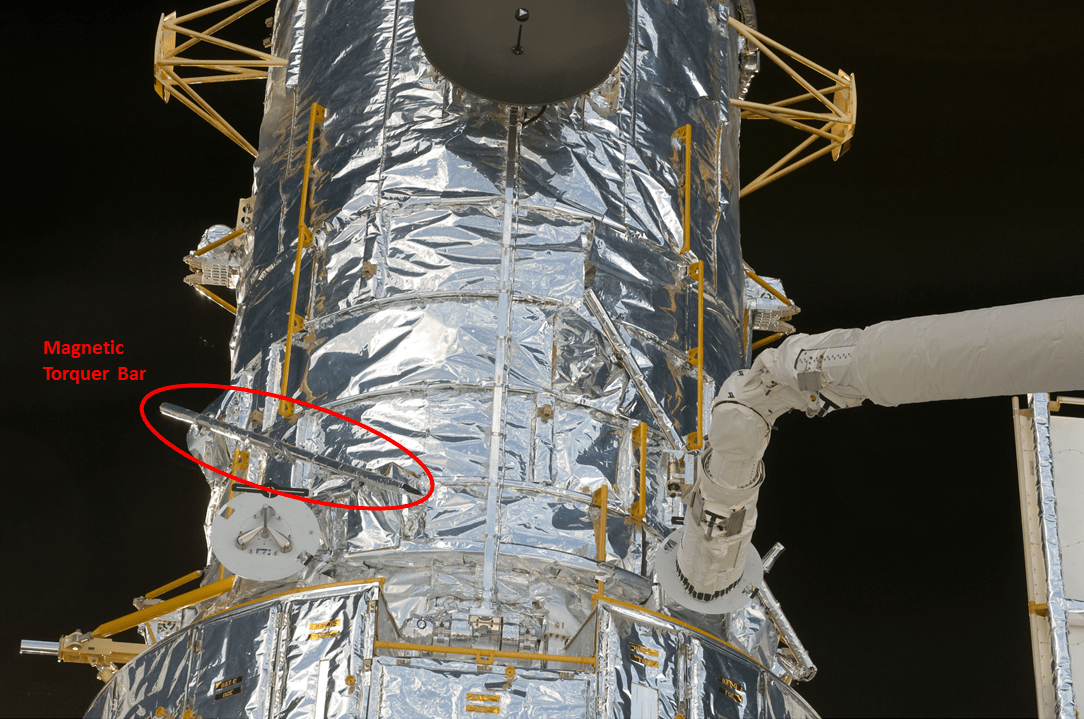
Two actuator systems physically rotate Hubble: the Reaction Wheel Assemblies and the magnetic torquers. Neither of these systems uses propellants, since the byproducts could contaminate the telescope’s field of view.
Newton’s third law of motion states that for every action, there is an equal and opposite reaction. Hubble utilizes this principle with its four reaction wheels, which are large, massive wheels that spin under the control of Hubble’s computer. If one of the reaction wheels turns clockwise, Hubble will turn counterclockwise. Changing the spin speed of any of the wheels produces a rotational force called torque. The combined changes in the spin speeds of the wheels allow Hubble to maneuver to point at any location in the sky. The four reaction wheels are each approximately two feet wide (smaller than a car tire), but in microgravity they can move the school-bus-sized Hubble because of their high spin rate and their mass. However, at its fastest, Hubble only moves as quickly as the minute hand of a clock (approximately 90 degrees in 15 minutes).
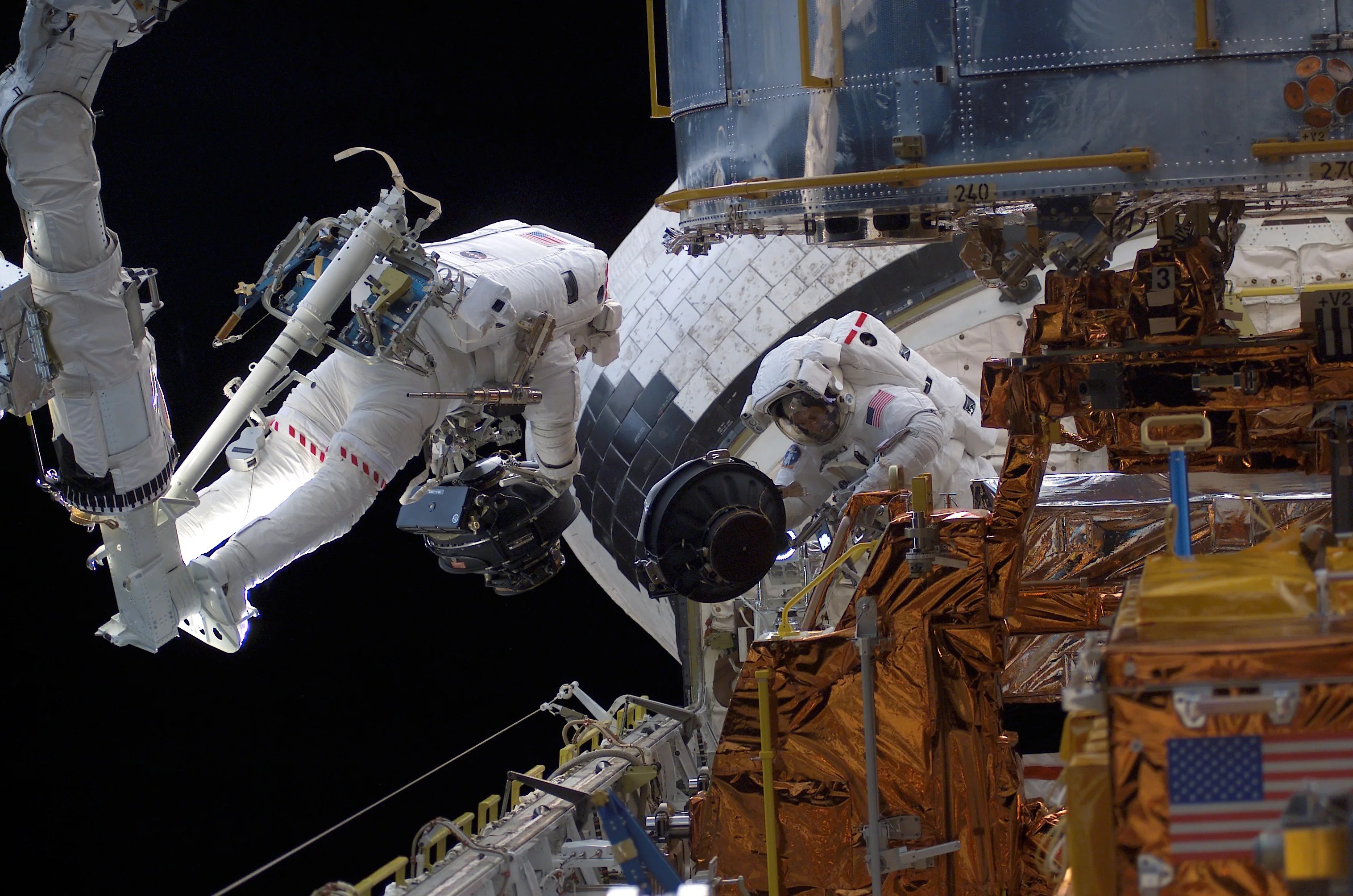
Magnetic torquers are eight-foot iron rods wrapped in wire that produce a magnetic field when commanded by Hubble’s computer. The magnetic field produced by the magnetic torquers pushes or pulls Hubble toward Earth’s magnetic field, rotating the telescope. There are four magnetic torquers installed on Hubble, located at 90-degree intervals on the outside of the spacecraft. The magnetic torquers are used to help reduce reaction wheel speeds, which can build up because of drag caused by Earth’s atmosphere (which, at Hubble’s orbit, is very thin but still present).
Using its unique Pointing Control System, the Hubble Space Telescope can seek out and focus on specific objects in the sky with unrivaled accuracy, allowing it to observe objects more than 13 billion light-years away.

